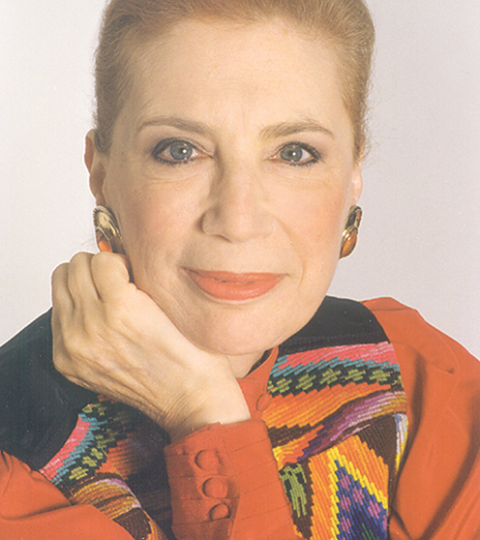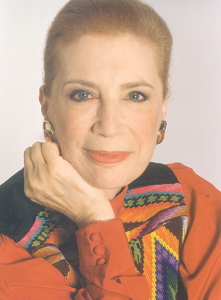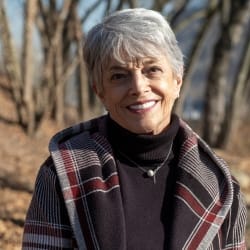

The men took their turns doing what male professors of that day did, parading back and forth across the stage, waving their arms, bragging of their accomplishments, and challenging the audience members to consider the truth of what they were expounding. And then this lovely, petite woman steps onto the stage, her dark hair slicked back in the rolled bun style that Grace Kelly popularized in that era. In a bright-colored, short Japanese style kimono, she leads with the story of her pain, a pain that had caused her to have to seek a new profession. As a music conductor at Julliard, Ilana had suffered with immobilizing back pain, and searched through many systems to alleviate it. “I would visit my Alexander Teacher who would touch me, and help me access feelings, but we would not talk about it. I would visit a psychologist where we would talk about feelings but not access them, and there was no touching.” When she studied Gestalt Therapy with Fritz and Laura Perls, she was encouraged to put these elements together. Experiences such as these had led her to declare in the 1960’s that “bodymind” was one word.
Next, a massage table was moved into center stage and a student volunteer laid down on it. I remember thinking in amazement, “she’s gonna do a demonstration of how she works with a client, right here on the stage of this auditorium?” Her gentle voice, the soft-spoken conversation sprinkled with humor, accompanied by a respectful supportive touch from what she later defined as “listening hands,” captivated me and her audience, with the results being an obvious transformation of her volunteer client. As I had been assigned to drive Ilana to the Omaha airport, I got to visit with her for over an hour and tell her how meaningful her presentation was for me, a social work professor, therapist, and former dancer.
Ilana went on to become the creator of the Rubenfeld Synergy Method, holding her first training sessions in her home in New York in 1997, while continuing her yearly workshops at Esalen in California and Omega Institute in New York state. When I moved to Texas in 1979, in a chance encounter that only seems to happen in the movies, I ran into Ilana at the Dallas-Fort Worth airport. She was coming up the escalator as I was going down. It was like no time had gone by and she invited me to participate in her next training session that met once a month for the better part of a year in New York City. After that year, I became part of the training team, and my psychologist husband Richard Citrin became a student. He had no plans to use her method in his own therapy work, (there was too much risk at that time for a male therapist to touch a woman client) but I encouraged him to take the training, promising him that he would “get his body back, at the very least,” which is what the first year of the work had done for me.
As a social work professor, I felt especially attracted to one section of Ilana’s work, her emphasis on self-care and the way she taught therapists and helpers to take care of themselves while doing their caring work. I brought her to the University of Texas at Arlington where I was co-director of the Women and Work Research and Resource Center, and she presented at our national conference on “Who Helps the Helper?” I then suggested we collaborate on a book on that topic. We wrote a proposal to a publisher that she knew, but there was no interest in a book on self-care. He was interested in a book on her method but neither one of us had the skills at that time to write that book. For over a year we collaborated on the self-care book as I’d bring the suitcase that contained my luggable computer, (that was what portable meant at that time) and meet her at Esalan. In between sessions where she taught and I assisted, we worked together on the book. Eventually we came to a mutual decision that the material we had was material for two books, mine on self-care and hers, on the one she needed to write about the Rubenfeld Synergy Method®. With the help of a therapist friend, we did the hard work of ending our writing partnership. My book, which used illustrations from her work with her permission came out as Stillpoint: The Dance of Self-Caring, Self-Healing in 1991. Hers titled Listening Hand: Self-Healing Through the Rubenfeld Synergy Method of Talk and Touch was published in 2000 by Bantam Books. My name can be found among the 5 pages of acknowledgements of people she thanked for helping her with her book.
I never felt that Ilana received the recognition her contribution to the helping professions deserved, although in 1994 the Association of Humanistic Psychology awarded her their Pathfinder Award, and in 2022 the US Association of Body Psychotherapy recognized her with their Lifetime Achievement Award. By now, Ilana’s legacy is vast. The people she has taught have helped people who have helped people, who have helped people. This is possible because she brought to her work the skills and determination of her first career as a conductor. Her analysis of her own performance led to her developing a way to teach others to perform as she did. She formed and supported organizations to oversee the continued training and promotion of the Rubenfeld Synergy Method, thus avoiding the kinds of conflicts and divisions that happen between students of a method once their founder is no longer involved. (Learn more at https://usabp.org/Rubenfeld-Synergy-Method-Training.)
Twenty-two years after Ilana and I had met, on the day after the summer solstice of 1997, a woman in Texas that I had introduced to Ilana’s method and training team gave me a Rubenfeld Synergy Session the day after my son had died of AIDS. I revised my book, Stillpoint in 2018 and since the pandemic, it has been the basis of a popular weekly online class on radical self-care for professional and family caregivers.
Since I learned of Ilana’s death, I have been grieving gratefully, realizing the impact she has had and continues to have on my life and work. I am transported back to her studio, observing, and recording the artistry that she brought to her helping role. Surrounded by a community of students in training, a client is stretched out on the table. She follows his verbal unburdening with her deep listening hands, supporting his telling of the visceral story his body is revealing. The man has chronic pain in his back, seems he’s had it since the war. With her encouragement he goes a bit further, talking more about the “regular war stuff” he started with. His troops liberated the camps. A Jewish man, he had lost relatives in the camps, and he begins listing those losses. Ilana, a Jewish woman needs help taking care of herself. As she continues holding his back, she whispers to me, “Sheila, brush me off,” and, as she had trained me, I use my hands to clear the energy field around us. We both follow instructions she received from a Brazilian healer. “Stay back, and let the angels help you.”
She and the man visit his family in happier times, remembering and focusing on how they lived, skiing in the Alps, picnicking in the park. As they finish and he begins to sit up, he looks like a young child just awakening from a nap.
And then the musician, conductor Ilana, in those days before playlists, cues up and plays a Viennese Waltz. As everyone in the room begins waltzing, and smiling joyfully in the knowledge that the atrocities, once stored in the body, are now gone, I remember what Mariam Chase, one of the founders of Dance Therapy taught her students, “Waltzing cures everything.” And I am grateful dear Ilana, that you and I got to dance.
For more about her method and those currently practicing it https://www.rubenfeldsynergy.com/.


